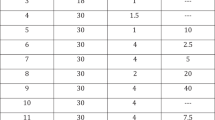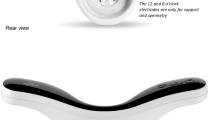Abstract
Objectives: To examine the impact of intracavernosal therapy on libido, ejaculatory control, quality of life and treatment dependency in men with erectile failure. Furthermore to assess the drop-out rate and reasons for dissatisfaction with the technique.
Subjects and methods: Questionnaires were sent to 1116 subjects with erectile failure who had previously elected to use intracavernosal therapy in the period 1995–1997.
Results: The response rate was 72.5%. The majority of erections lasted 30–60 min, 10–20% of the erections were considered unsatisfactory for intercourse and 15% of subjects reported erections lasting longer than 5 h on at least 10% of the occasions. Bleeding at the injection site occurred in 60% on at least 10% of the occasions and various degrees of deformation of the penis shaft were reported by 10%. The latter was related to the age of the subject and not the type of medication employed. Forty percent experienced at least partially improved control over ejaculation and almost 50% experienced some degree of increase in libido. One quarter retained penile rigidity after ejaculation but this was age-dependent. In those satisfied with intracavernosal treatment, 80% admitted that it had improved the quality of their lives. Sixty percent did not feel that their dependency on intracavernosal treatment had lessened during the treatment period.
Approximately 40% of subjects admitted to dropping out of the programme, the majority within the first six months. The age of the subject did not influence the decision and the type of medication or the mode of injection had only a minor impact on drop-out rate. Of those currently using IC therapy, 87% were either fully or partly satisfied with this form of treatment. The corresponding figure for those discontinuing treatment was 58%. Dissatisfaction was higher in the younger age groups and could not be clearly related to the mode of injection. The major reasons for drop out or dissatisfaction were inadequate penile rigidity, the expense of the treatment, penile discomfort and the lack of spontaneity it necessitated. Penile discomfort was more associated with younger age groups, whilst an inadequate response to medication was more often experienced by men over 60 y. Deformation of the penile shaft was observed in 5% of those dissatisfied with IC therapy and was four times more often reported by those over 70 compared to subjects younger than 40 y. In 6% of cases, a return of spontaneous erections was given as reason for drop-out. This was more often associated with younger subjects. In 16% of the subjects, the partner had expressed dissatisfaction with the technique primarily because of inadequate rigidity, lack of spontaneity or the complicated nature of the treatment.
Conclusions:Intracavernosal treatment for erection failure is associated with side-effects such as penile fibrosis and bleeding at the injection site but has advantages including increased libido, an increase in the quality of life and ejaculatory control. Only a small proportion of men reduce their dependency on the technique with time. The therapy has a relatively high attrition rate. In many cases, the reasons for subject and partner dissatisfaction are potentially correctable e.g. by altering the medication used, by the use of injector devices or by obtaining financial support for IC medication from medical welfare.
This is a preview of subscription content, access via your institution
Access options
Subscribe to this journal
Receive 8 print issues and online access
$259.00 per year
only $32.38 per issue
Buy this article
- Purchase on Springer Link
- Instant access to full article PDF
Prices may be subject to local taxes which are calculated during checkout
Similar content being viewed by others
Author information
Authors and Affiliations
Rights and permissions
About this article
Cite this article
Purvis, K., Egdetveit, I. & Christiansen, E. Intracavernosal therapy for erectile failure—Impact of treatment and reasons for drop-out and dissatisfaction. Int J Impot Res 11, 287–299 (1999). https://doi.org/10.1038/sj.ijir.3900435
Received:
Accepted:
Published:
Issue Date:
DOI: https://doi.org/10.1038/sj.ijir.3900435
Keywords
This article is cited by
-
Men’s beliefs about treatment for erectile dysfunction—what influences treatment use? A systematic review
International Journal of Impotence Research (2021)
-
Experience with intracavernous injection in the treatment of erectile dysfunction after radical prostatectomy: dose considerations
International Journal of Impotence Research (2011)
-
Vacuum erection devices to treat erectile dysfunction and early penile rehabilitation following radical prostatectomy
Current Urology Reports (2008)
-
Versorgung der erektilen Dysfunktion nach radikaler Prostatektomie in Deutschland
Der Urologe (2006)
-
Combining programmed intracavernous PGE1 injections and sildenafil on demand to salvage sildenafil nonresponders
International Journal of Impotence Research (2005)



